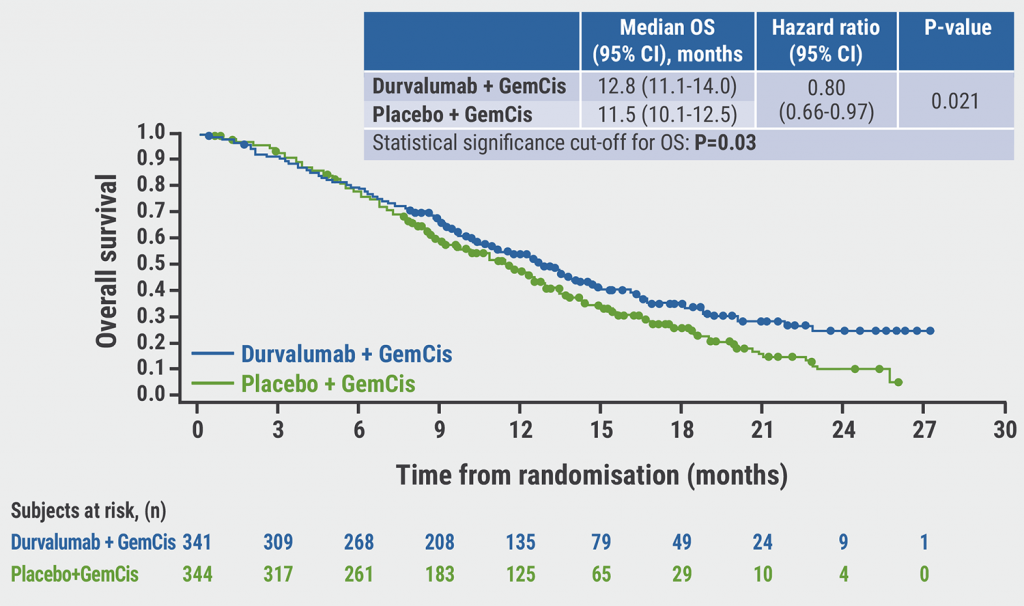As reported in Gut, Dr. Masayuki Kitano of Wakayama Medical University in Japan and colleagues compared the two types of devices in 366 patients with malignant gastric outlet obstruction.
The primary disease in both groups was pancreatic cancer (about half of patients), followed by gastric cancer in about 32%, and gallbladder in about 6%.
About 35% of patients in each group had an intrinsic tumor.
Overall survival was poor, with no between-group difference: the probability at three months was 49.7% for covered versus 48.4% for uncovered stents.
Within that short-survival setting, the proportion of patients with stent dysfunction was significantly higher for uncovered stents (35.2% vs. 23.4%), with a significantly shorter time to stent dysfunction. The dysfunction rate was significantly higher for extrinsic tumors (35.6% vs. 17.5%).
A subgroup analysis showed lower tumor ingrowth when covered stents were used for intrinsic tumors (1.6% vs 27.7%) but higher stent migration when used with extrinsic tumors (15.3% vs. 2.5%).
The authors conclude, "Due to poor patient survival, minor differences between covered and uncovered stents may be less relevant even if statistically significant; however, subgroup analysis would suggest to use covered stents for intrinsic and uncovered stents for extrinsic malignancies."
Dr. Kitano did not respond to requests for a comment, but three U.S. experts commented in emails to Reuters Health.
Dr. Amit Raina, Director, Center for Comprehensive Pancreatic Care at Mercy Medical Center in Baltimore, pointed out that what the researchers refer to as a covered stent was actually partially covered because "it says in the fine print" that its ends were uncovered.
"This study confirms what we have known in various diseases of bile duct (cholangiocarcinoma or pancreatic cancer), esophageal cancers and also gastric outlet obstruction," he said. "Covered SEMS, because of their covering, can be associated with higher risk of migration versus uncovered SEMS, but the covering leads to lower risk of tumor ingrowth and hence longer time to stent occlusion."
"Covered gastroduodenal SEMS have not been available here in the U.S. for gastroduodenal or colonic tumors," he said. "If covered SEMS become available here, I do recommend using them for intrinsic malignant stenosis and uncovered SEMS for extrinsic stenosis. To minimize risk of migration in this situation, we can even endoscopically suture the stent's proximal end to the gastric antrum wall."
"Another benefit of covered stents being available here in the U.S. would be to treat benign stenosis of gastric outlet or duodenum, which are seen after peptic ulcer disease," he added.
Dr. Sunguk Jang, Associate Director of Endoscopy at the Cleveland Clinic, disagrees with the findings. "I believe the conclusion/recommendation to select an uncovered stent for 'extrinsic' and covered for 'intrinsic' is incorrect," he said. "In the U.S., we use uncovered stents for malignant gastric outlet obstruction and seldom (if ever) use a covered type. In a remote case, it is off-label use. It is not surprising, however, that there is virtually no difference in outcome between the two groups."
Dr. John Poneros, Associate Director of the Endoscopy Unit at Columbia University Irving Medical Center in New York City, said the findings "align with our experience."
"In general, patients with uncovered metal stents do better, but the prognosis is so poor in this patient population, unfortunately, that the difference is not meaningful. We virtually never put in covered metal stents for gastric outlet obstruction in unresectable, malignant disease. The risk of migration is high enough that we opt for uncovered stents in that clinical scenario."
"The main learning point is that the technical success rate is high and patients are so grateful to be able to eat once the stent is placed," he said. "Affording this option to terminal patients with malignant gastric outlet obstruction is something that every hospital should strive to provide."
SOURCE: https://bit.ly/2IilyIi Gut, online November 22, 2020.
By Marilynn Larkin
Posted on
Previous Article
« New asthma guidelines advise single maintenance and reliever therapy Next Article
Flying after concussion may not affect symptoms, recovery »
« New asthma guidelines advise single maintenance and reliever therapy Next Article
Flying after concussion may not affect symptoms, recovery »
Related Articles
July 19, 2021
Building a better FIT test for colon cancer screening

© 2024 Medicom Medical Publishers. All rights reserved. Terms and Conditions | Privacy Policy
HEAD OFFICE
Laarderhoogtweg 25
1101 EB Amsterdam
The Netherlands
T: +31 85 4012 560
E: publishers@medicom-publishers.com

